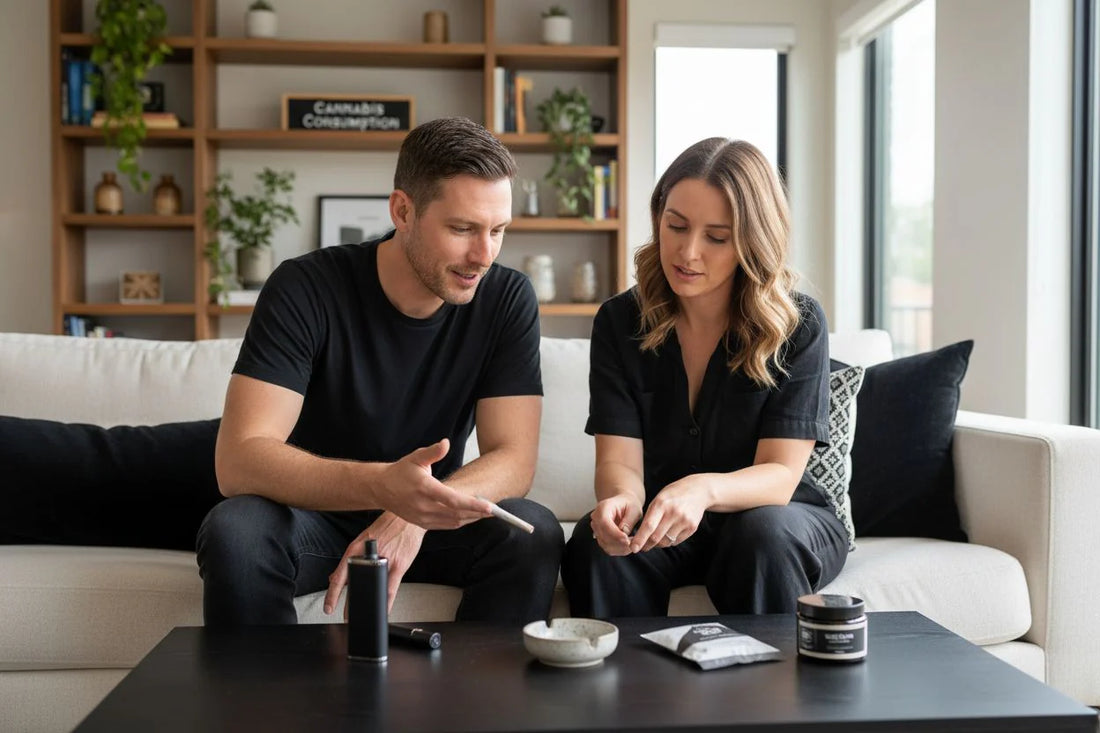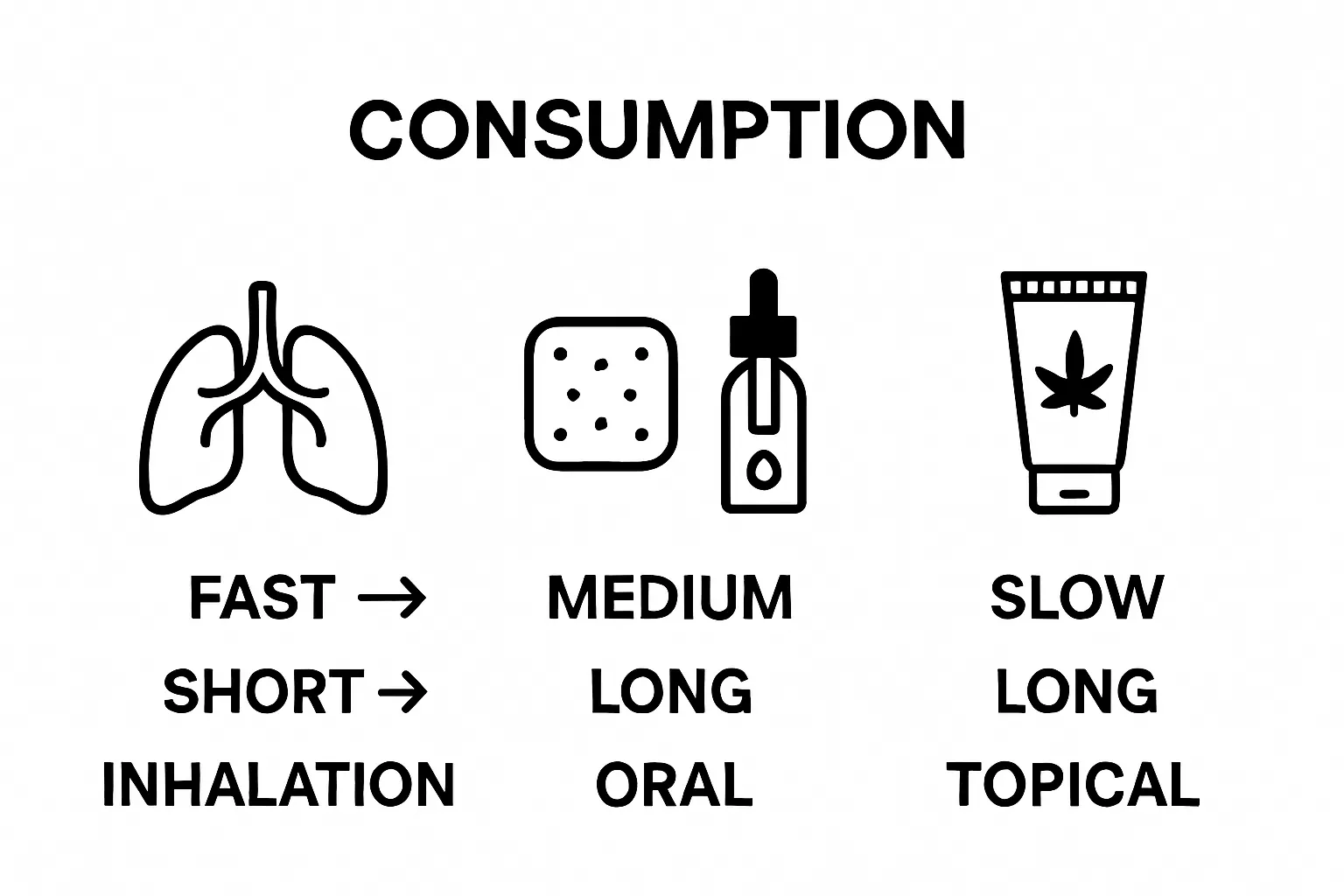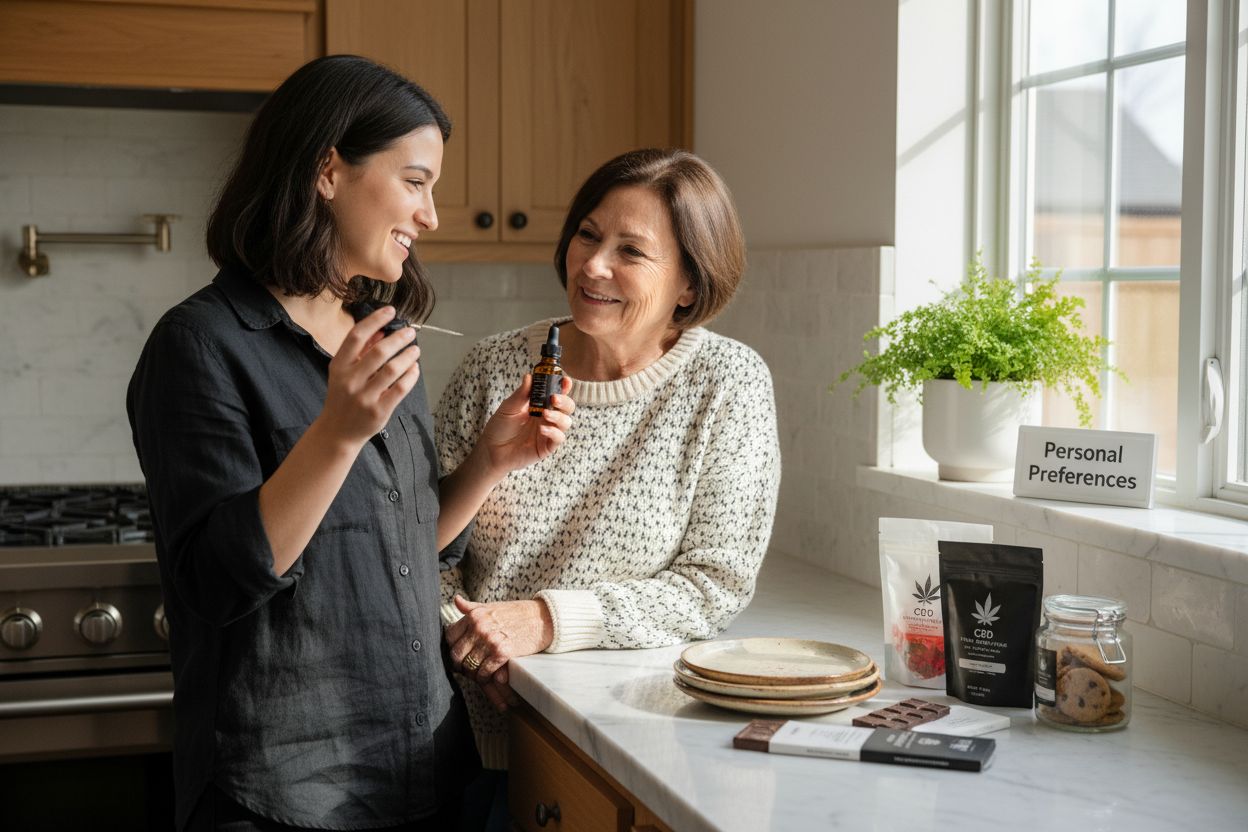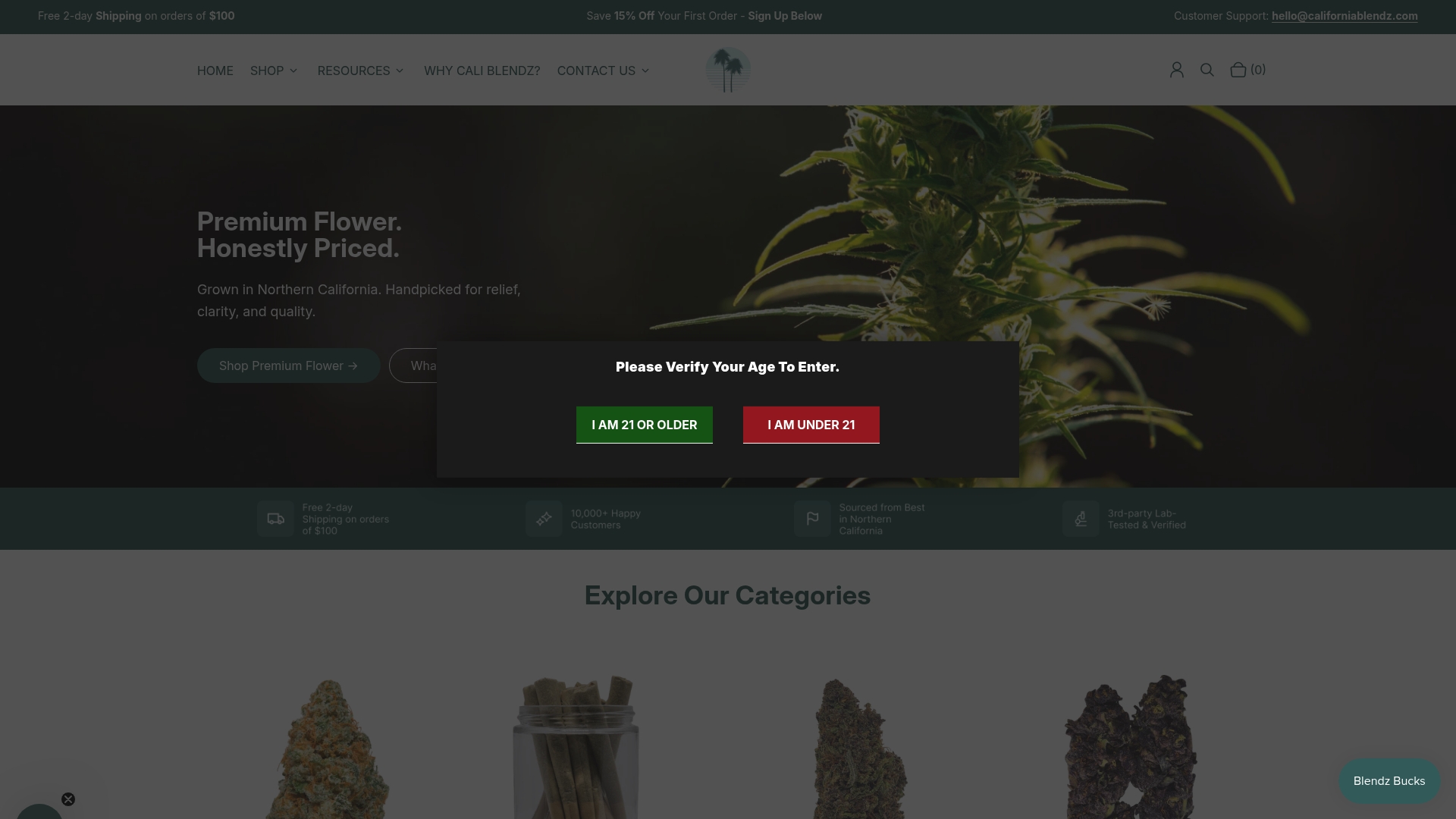Understanding Cannabis Consumption Methods for Wellness
Written by California Blendz

People are discovering more ways to use cannabis than ever before and each method changes the way your body feels its effects. Some believe smoking or vaping is the obvious choice, but the real surprise is in the numbers. Oral methods like edibles only allow 4 to 12 percent of cannabinoids to be absorbed by the body, while inhaling can deliver as much as 35 percent. So the way you choose to consume cannabis matters far more than most realize and could completely shift your wellness results.
Table of Contents
- What Are The Different Cannabis Consumption Methods?
- Why Cannabis Consumption Methods Matter In Wellness
- How Different Consumption Methods Affect The Body
- Key Concepts In Cannabis Consumption: Potency And Bioavailability
- Exploring Preferences: Choosing The Right Method For You
Quick Summary
| Takeaway | Explanation |
|---|---|
| Choose inhalation for fast effects | Inhalation methods like smoking and vaping deliver cannabinoids quickly through the lungs for immediate therapeutic relief. |
| Opt for edibles for longer-lasting relief | Oral consumption methods, such as edibles and tinctures, provide prolonged cannabinoid effects through digestion, suitable for sustained symptom management. |
| Consider topical methods for localized relief | Topical applications allow targeted treatment of specific areas without psychoactive effects, beneficial for muscle and joint pain. |
| Personalize according to your health goals | Individual wellness objectives, such as symptom type and effect duration, should guide the selection of a suitable consumption method. |
| Consult professionals for optimal choices | Medical consultation can help determine the best cannabis consumption method based on personal health and past experiences. |
What are the Different Cannabis Consumption Methods?
Cannabis consumption has evolved dramatically, offering multiple methods that cater to diverse wellness needs and personal preferences. Understanding these cannabis consumption methods allows individuals to select an approach that best suits their desired effects, comfort level, and health objectives.
Inhalation Methods: Smoking and Vaping
Inhalation remains one of the most traditional and rapid cannabis consumption techniques. When cannabis is inhaled, cannabinoids enter the bloodstream directly through lung tissue, providing near-immediate effects. Research from the National Center for Biotechnology Information suggests that inhalation methods can provide quick onset of therapeutic effects.
Two primary inhalation methods exist:
- Smoking: Involves burning dried cannabis flower in papers, pipes, or bongs
- Vaping: Uses heated cannabis extracts or flower at lower temperatures to create inhalable vapor
Oral Consumption: Edibles and Tinctures
Oral consumption methods offer a more controlled and often longer-lasting cannabis experience. These methods process cannabinoids through the digestive system, resulting in a slower but potentially more extended effect profile. Tinctures provide a middle ground, absorbing sublingually for faster uptake compared to traditional edibles.
Key oral consumption options include:
- Edibles: Cannabis-infused foods and beverages
- Tinctures: Concentrated liquid extracts taken under the tongue
- Capsules: Precisely dosed cannabis oil in pill form
Topical and Alternative Applications
Beyond inhalation and oral methods, cannabis can be applied topically or through specialized delivery systems. These methods often target localized relief without psychoactive effects. Our guide on cannabis extraction processes provides deeper insights into how these diverse consumption methods are developed.
Topical applications include:
- Balms and Creams: For targeted muscle and joint relief
- Transdermal Patches: Providing consistent, controlled cannabinoid absorption
- Massage Oils: Offering localized therapeutic benefits
Choosing the right cannabis consumption method depends on individual wellness goals, tolerance levels, and personal comfort with different administration routes.
To help you compare the main cannabis consumption methods for wellness, the table below summarizes their features, onset time, duration, bioavailability, and primary use cases.
| Method | Onset Time | Duration of Effects | Bioavailability (%) | Primary Use Cases |
|---|---|---|---|---|
| Inhalation | 1-5 minutes | 1-3 hours | 10-35 | Fast relief, acute symptom management |
| Oral (Edibles) | 30-90 minutes | 4-8 hours | 4-12 | Long-lasting relief, sustained management |
| Oral (Tinctures) | 15-45 minutes | 2-6 hours | 4-20 | Medium onset, flexible dosing |
| Topical | Varies (minutes) | 1-5 hours | Local only | Targeted pain/muscle relief |
| Transdermal Patch | 20-60 minutes | 6-12 hours | Varies | Continuous, controlled symptom management |
Why Cannabis Consumption Methods Matter in Wellness
Cannabis consumption methods are far more than just different ways of using the plant. They represent critical pathways for personalized wellness strategies, allowing individuals to target specific health objectives with precision and care.
Personalized Health Outcomes and Bioavailability
Each cannabis consumption method influences how cannabinoids interact with the body, directly impacting therapeutic effectiveness. Research from the National Institutes of Health indicates that different administration routes significantly alter cannabinoid absorption, metabolization, and potential health benefits.
Key factors influencing wellness outcomes include:
- Absorption Rate: How quickly cannabinoids enter the bloodstream
- Duration of Effects: Length of time therapeutic compounds remain active
- Targeted Relief: Ability to focus on specific physiological systems
Minimizing Potential Health Risks
Choosing the right consumption method can substantially reduce potential health risks associated with cannabis use. Cannabis Wellness Without the High: Navigating the Safe & Sober Path explores alternative approaches for individuals seeking therapeutic benefits without intoxication.
Risk mitigation strategies involve:
- Respiratory Protection: Selecting non-inhalation methods
- Precise Dosing: Using methods allowing accurate cannabinoid measurement
- Symptom-Specific Targeting: Matching consumption method to wellness goals
Individual Variability and Medical Considerations
Individual physiology, medical history, and wellness objectives profoundly influence optimal cannabis consumption methods. What works effectively for one person might produce different results for another. Factors like metabolism, existing health conditions, and personal tolerance create a complex landscape of potential interactions.
Wellness professionals increasingly recognize that cannabis is not a one-size-fits-all solution. Understanding consumption methods empowers individuals to make informed decisions aligned with their unique health requirements, transforming cannabis from a generic substance into a personalized wellness tool.
How Different Consumption Methods Affect the Body
Cannabis interacts with the human body through complex biochemical pathways, with consumption method playing a critical role in determining physiological responses. Understanding these interactions provides insight into how cannabinoids influence wellness and therapeutic outcomes.
Absorption and Metabolic Pathways
Research from the National Institutes of Health reveals that different cannabis consumption methods dramatically alter how cannabinoids are processed and utilized by the body. Each method triggers unique metabolic responses, affecting the speed, intensity, and duration of therapeutic effects.

Key absorption characteristics include:
- First-Pass Metabolism: Oral consumption routes subject cannabinoids to liver processing
- Direct Bloodstream Entry: Inhalation methods bypass initial metabolic breakdown
- Localized Interaction: Topical applications engage endocannabinoid receptors at application sites
Neurological and Physiological Interactions
Cannabinoids engage with the body’s endocannabinoid system through multiple receptor interactions. These interactions differ significantly based on consumption method, influencing neurological responses and potential therapeutic benefits. Our comprehensive guide on edibles versus smoking provides deeper insights into these nuanced interactions.
Important neurological response factors include:
- Receptor Activation: Speed and intensity of cannabinoid receptor engagement
- Neurotransmitter Modulation: Impact on brain chemistry and signaling
- Systemic vs. Localized Effects: Breadth of physiological response
Bioavailability and Long-Term Impacts
Bioavailability represents the proportion of cannabinoids successfully absorbed and utilized by the body. Different consumption methods yield vastly different bioavailability percentages, directly influencing therapeutic potential. Inhalation methods typically offer higher immediate bioavailability, while oral consumption provides slower, more sustained release.
Complex factors like individual metabolism, genetic predisposition, and overall health status further modulate how cannabis consumption methods interact with human physiology. This intricate interplay underscores the importance of personalized approaches to cannabis wellness, recognizing that no single method universally suits all individuals.
Key Concepts in Cannabis Consumption: Potency and Bioavailability
Potency and bioavailability represent fundamental scientific concepts that significantly influence cannabis therapeutic potential and user experience. Understanding these principles enables more informed and strategic cannabis consumption for wellness purposes.
Defining Potency and Its Significance
Research on cannabis concentration metrics reveals potency as the total concentration of active cannabinoids, primarily THC and CBD, within a cannabis product. Potency directly correlates with the intensity of potential physiological and psychoactive effects, making it a critical consideration for medical and recreational users.
Key potency characteristics include:
- Cannabinoid Concentration: Total percentage of active compounds
- Strain Variability: Differences in potency across cannabis varieties
- Extraction Method Impact: Processing techniques affecting compound concentration
Understanding Bioavailability Mechanisms
Our comprehensive guide on cannabis potency explores how bioavailability determines the proportion of cannabinoids successfully absorbed into the bloodstream. Different consumption methods yield dramatically different absorption rates, influencing therapeutic effectiveness.
Important bioavailability factors include:
- Metabolic Processing: How liver enzymes break down cannabinoids
- Absorption Efficiency: Percentage of compounds entering systemic circulation
- Consumption Method Variations: Impact of inhalation, oral, and topical routes
Practical Implications for Wellness
Scientific research from the National Institutes of Health indicates bioavailability percentages range significantly across consumption methods. Inhalation typically provides 10-35% cannabinoid absorption, while oral routes offer 4-12%, demonstrating the complexity of cannabis pharmacokinetics.
The interplay between potency and bioavailability creates a nuanced landscape for cannabis wellness. Individual factors like metabolism, genetic predisposition, and overall health further modulate how cannabinoids interact with the body. This complexity underscores the importance of personalized approach and professional guidance when integrating cannabis into wellness strategies.
The following table outlines key factors affecting the bioavailability and potency of cannabis, providing a clearer understanding of how each element influences therapeutic outcomes.
| Factor | Definition/Description | Impact on Wellness |
|---|---|---|
| Potency | The concentration of active cannabinoids (THC, CBD) | Influences intensity and psychoactive/non-psychoactive effects |
| Bioavailability | Percentage of cannabinoids absorbed into the bloodstream | Dictates therapeutic effect strength and duration |
| Metabolic Processing | Liver and digestive breakdown (mainly with oral methods) | Can reduce or delay cannabinoid effectiveness |
| Absorption Efficiency | Ease and speed at which cannabinoids enter systemic circulation | Higher efficiency results in quicker, more reliable effects |
| Consumption Method | Route of administration (inhalation, oral, topical, etc.) | Changes both onset, duration, and potential risks |
Exploring Preferences: Choosing the Right Method for You
Selecting an appropriate cannabis consumption method requires careful consideration of personal wellness goals, lifestyle constraints, and individual physiological responses. The right approach balances therapeutic potential with personal comfort and practical considerations.
Personal Health and Wellness Objectives
Research on patient preferences demonstrates that cannabis consumption methods are deeply personal, influenced by specific health conditions, desired outcomes, and individual wellness strategies. Understanding your primary objectives becomes crucial in method selection.
Key wellness considerations include:
- Symptom Management: Targeting specific health concerns
- Onset Speed: Immediate versus gradual effect requirements
- Duration of Relief: Short term versus extended therapeutic support
Lifestyle and Practical Constraints
Our guide on cannabis wellness approaches highlights the importance of integrating cannabis consumption seamlessly into daily life. Practical factors like discretion, convenience, and social environment play significant roles in method selection.
Important lifestyle factors include:
- Discretion Level: Public versus private consumption comfort
- Time Availability: Quick versus extended consumption methods
- Professional Considerations: Workplace and social restrictions
Individual Physiological Responses
Understanding personal physiological responses is paramount in selecting an optimal consumption method. Factors such as metabolism, tolerance, previous cannabis experience, and potential side effects contribute to determining the most suitable approach.
Individuals must consider their unique bodily responses, recognizing that cannabis interaction varies dramatically between people. What provides relief for one person might produce different results for another. Professional medical consultation can offer personalized guidance, helping navigate the complex landscape of cannabis consumption methods with informed precision.

Find Your Perfect Cannabis Method with California Blendz
Unlocking the right cannabis consumption method is often a challenge. Whether you seek fast-acting relief, targeted wellness, or a mindful approach to potency and bioavailability, finding trustworthy products that match your goals can feel overwhelming. California Blendz makes this journey easier by offering a curated selection of premium, lab-tested flower and products, tailored for every wellness preference. Explore our THCa Prestige Vault for high-purity options if you want advanced wellness or dive into The Founder’s Collection for time-tested favorites developed with care.

Let your next wellness step be informed and empowered. Shop with confidence at California Blendz and experience organic quality, transparent sourcing, and tailored guidance that supports every stage of your cannabis journey. Discover your preferred method today so you can start feeling the difference.
Frequently Asked Questions
What are the main methods of cannabis consumption?
The primary methods of cannabis consumption include inhalation (smoking and vaping), oral consumption (edibles, tinctures, and capsules), and topical applications (balms and creams). Each method offers different onset times and effects.
How does cannabis consumption method affect therapeutic outcomes?
Different consumption methods influence how cannabinoids are absorbed and metabolized by the body, affecting the speed, intensity, and duration of therapeutic effects. Inhalation methods provide quicker effects, while oral methods lead to prolonged relief.
What should I consider when choosing a cannabis consumption method?
When selecting a method, consider your health and wellness objectives, lifestyle constraints, and personal physiological responses. Factors such as symptom management, onset speed, and duration of relief are also important.
Are there any health risks associated with different cannabis consumption methods?
Yes, certain methods, particularly inhalation, may pose respiratory risks. Choosing the right method can help minimize potential health risks, such as opting for non-inhalation methods or precise dosing techniques.
Recommended
- Cannabis Wellness Without the High: Navigating the Safe & Sober Path – California Blendz
- 7 Essential Tips for Using Cannabis for Seniors – California Blendz
- Unveiling the Effects of Smoking Cannabis Out of Papers on Flavor Prof – California Blendz
- Edibles vs Smoking CBD: Which Method is Right for You? – California Blendz
- Unlock Your Potential: Explore Top Cannabis Courses Online
- Understanding Employee Wellness Programs and Their Benefits – The Ocean Straw








